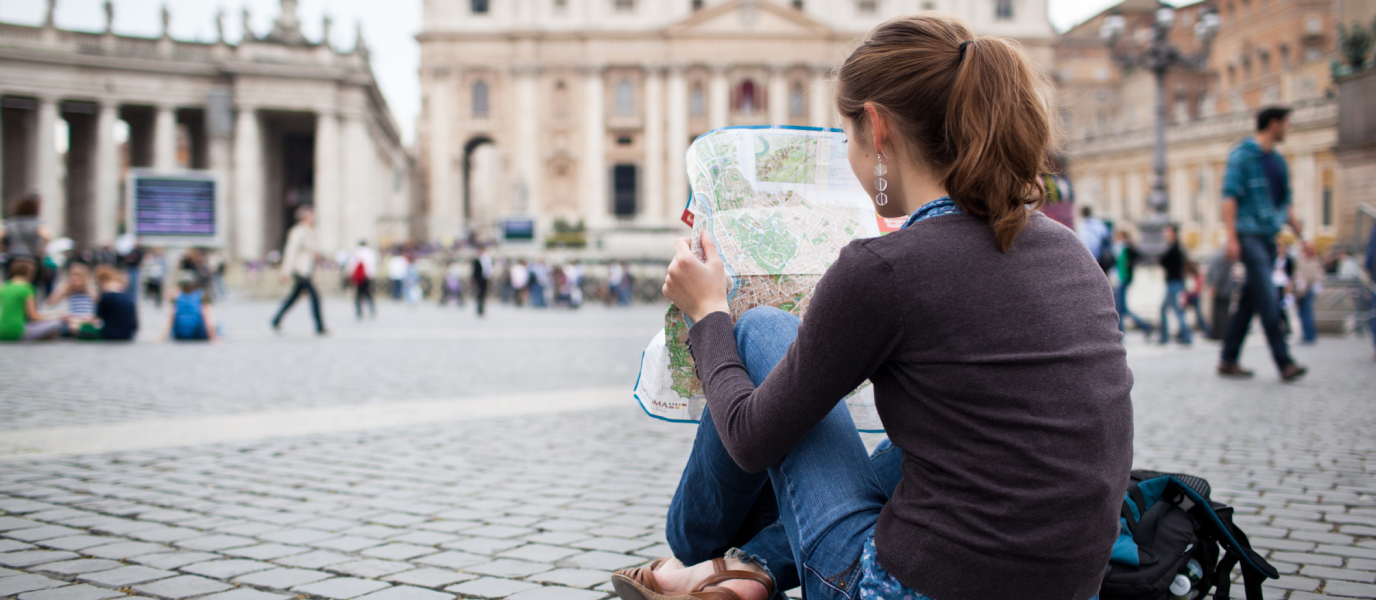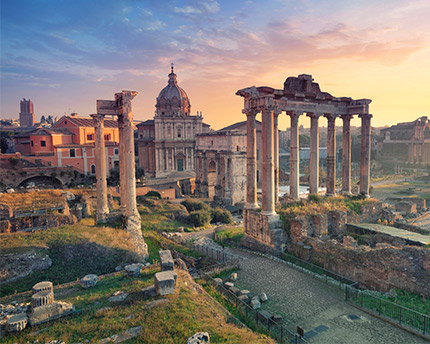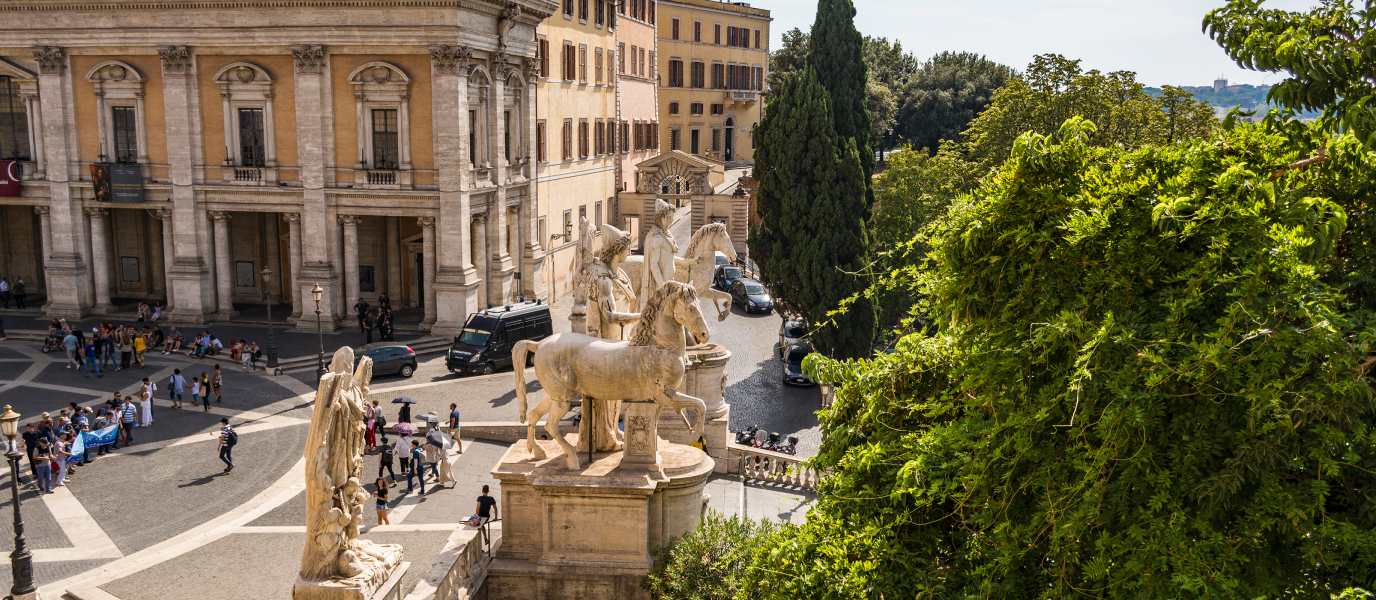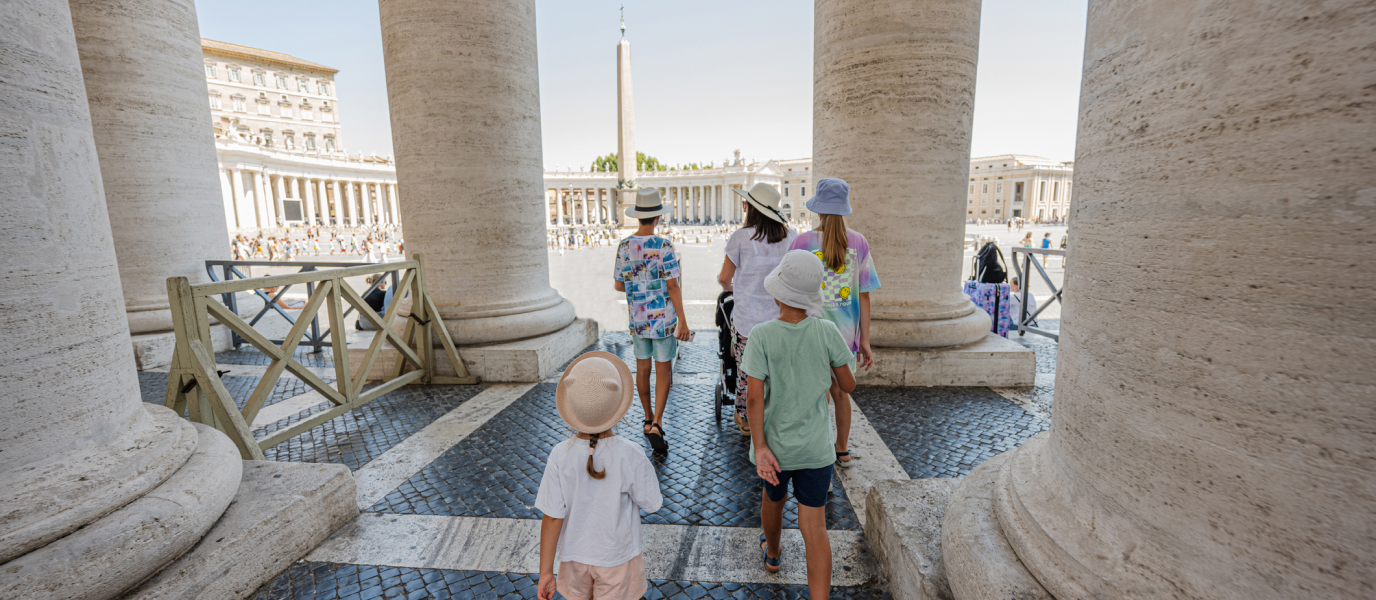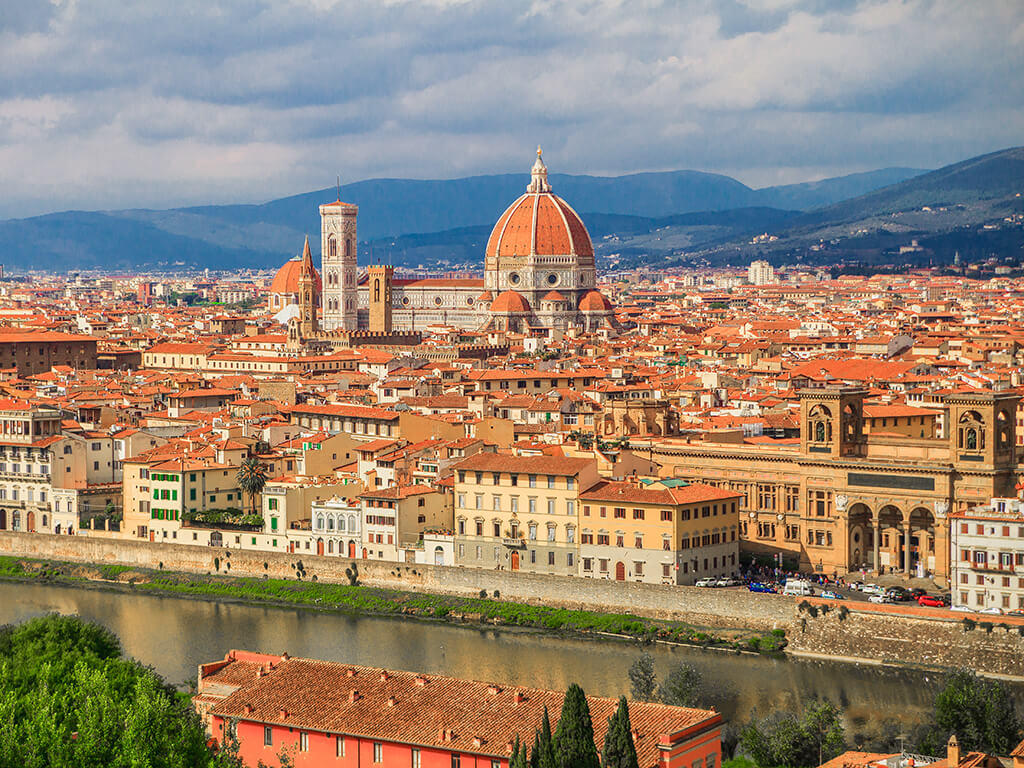In spite of its small size, the Vatican is a prime example of a cultural hub. It is a sovereign state with under 800 inhabitants and only occupies forty-four hectares. It dates back over one millennium to 756 when Pope Stephen II created the Papal States. It was not until 1929, however, that is was recognised as an independent state in the Lateran Treaty. The Vatican is the home of the Holy See which has ecclesiastical jurisdiction of the Catholic Church worldwide. The head of state is the Pope, meaning Vatican City is classed as the last absolute monarchy in Europe.
The historical, artistic and architectural heritage of the Vatican is of such immense value that it was declared a UNESCO World Heritage Centre in 1984. It contains a truly astonishing number of monuments and works of art.
Visiting the Vatican: the must-sees
This brief guide will give you a quick introduction to the buildings, museums, monuments and activities that you really should not miss when you visit Vatican City.
-
St. Peter’s square
One of your first stops when you visit the Vatican has to be the perfect ellipse that Bernini created in St. Peter’s Basilica. It was designed in 1629 and it is like a huge arm inviting visitors to enter. The square has over 280 Doric columns and, in the middle, there is a large obelisk with no inscription at all. The obelisk was brought there from Egypt but it was originally positioned in the Roman Forum. It was Pope Sixtus V who, in 1586, decided to move it to its current place in front of the basilica.
He did so in order to commemorate the martyrdom of St. Peter in the Circus of Nero. There are hundreds of figures of saints right at the top.
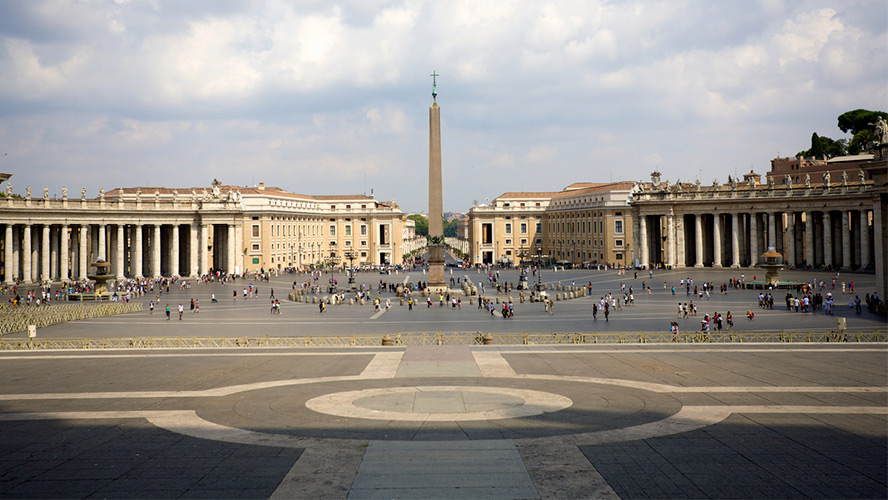
Every Sunday at 12.00 p.m., the faithful pray the Angelus in the square and if the Pope is in the Holy See he leads the crowds in prayer from the balcony.
-
St. Peter’s Basilica
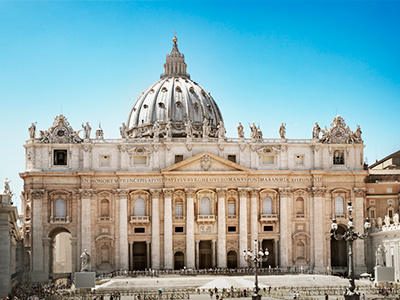
The colossal dome on top of St. Peter’s Basilica dominates the area and welcomes visitors to one of the most prominent spots in the Vatican. A spiritual symbol for many millions of people, the building is a stunning combination of the artistic styles of the masters who created it. Pope Julius II, an undeniable advocate of th
e Renaissance period, was behind the complex project. On the outside, you can enjoy the dome designed by Bramante and made a reality by Michelangelo. Additionally, you can enjoy the sublime classic façade that Carlo Maderno used to put the finishing touches on over a century of building work. On the inside, St. Peter’s Basilica is a museum where you can observe some of the Vatican’s most prized works of art. For example, Michelangelo’s sublime ‘Pietà’ or Bernini’s majestic baldachin. These are just the tip of the iceberg and some of the reasons you will find it hard to drag yourself away. If you do decide to go up to the dome then you will be duly rewarded with unbeatable views of the square.
-
The Vatican Museums
The so-called Museum of Museums consists of a number of different buildings and the rooms of the Papal Palace and the Vatican Library. It is used to house the Church’s massive artistic heritage. The Vatican Museums are very close to St. Peter’s Basilica, but make sure you plan ahead and manage your time well because the collection is vast. The Pio-Clementino Museum is one of the most outstanding of all. It houses many of the pieces that belonged to Pope Julius II, including the impressive ‘Laocoön and his Sons’ sculpture.
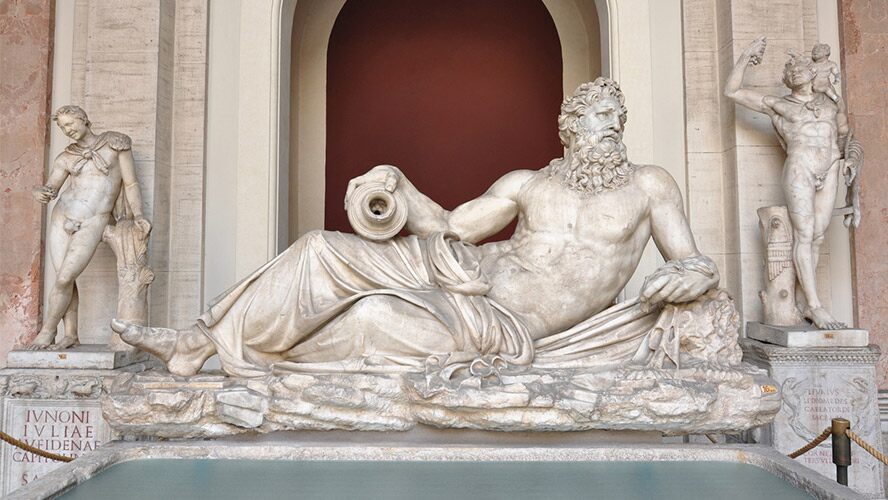
The Chiaramonti Museum is another of the most impressive if you are keen on classic statues. Raphael’s Rooms are among the jewels in the Vatican’s crown. Take some time to admire the ‘School of Athens’ fresco. And, of course, the pièce de résistance is the breathtaking Sistine Chapel where Michelangelo painted the ceiling and changed the role of art forever.
-
The Vatican Gardens

Of the 44 hectares of the Vatican City, the gardens make up over half. The city gardens date back to medieval times and underwent significant changes during the Renaissance period when Pope Julius II commissioned Bramante to landscape them. Nature, architecture and sculpture all come together. It is a truly special place and visitors are not allowed to walk around on their own. You will only be permitted access with a guide and if you have made a reservation. In addition to some wonderful views of St. Peter’s Basilica, you will also have the chance to walk around the tranquil gardens where Popes have meditated over the centuries.
-
The Vatican Necropolis
The Vatican Necropolis is situated under Vatican City and should not be confused with the Vatican grottoes under the central nave of St. Peter’s Basilica where Popes are laid to rest. It is somewhere between five and twelve meters under the basilica. It dates back to Imperial times and was only discovered in 1940 when some excavation work was under way. One of the most exciting findings was the Tomb of the Julii, a mausoleum with a vaulted ceiling elaborately decorated with a mosaic depicting Helios riding in a chariot. The tomb has additional mosaics depicting religious themes that seem to suggest that it was a Christian burial place. You will need to make a reservation if you would like to visit it.
-
The Swiss Guard
The Swiss Guard is an exclusive armed force responsible for the Pope’s safety and the safety of the Holy See. It is the world’s smallest armed force and there are only 100 soldiers. It dates back to the 16th century when Pope Julius II asked Swiss nobility for a special group to take responsibility for his personal protection. Incidents such as the Sack of Rome have shown just how useful the Swiss Guard can be. The rather peculiar uniform will catch your eye. It was designed by Commander Jules Répond in the early 20th century. He took inspiration from Raphael’s frescoes and the colours are a reflection of two different houses: the blue and yellow represent the Della Rovere coat of arms of Pope Julius II, whilst the red represents the Médici coat of arms of Pope Leo X. When you visit the Vatican, you’ll see the soldiers controlling all points of access but they do not interact with tourists and you must be respectful at all times. You can take photos as long as you do so from a suitable distance. However, remember that the soldiers are working and that they have a very important job to do.



































































